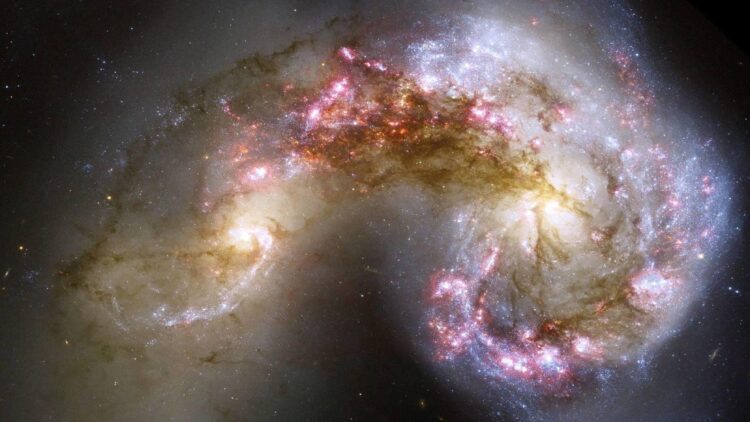The galaxy of which the Solar System is a part of – the Milky Way – is set on a collision course with its closest neighbor – the Andromeda galaxy. It has long been expected for this event, but recent observations indicate that this cosmic event might take place earlier than predicted.
Indeed, it is now thought that the process of merging has already commenced. Here in this article, we are going to analyse the implications of such a galactic crash and the ejection of an enormous number of stars.
Why the Milky Way and Andromeda are approaching each other at 110 kilometers per second
Scientists are aware that the Milky Way and the Andromeda galaxy are approaching each other at a speed of 110 kilometres per second. Still, for the last centuries, this collision was expected to occur in roughly 4 billion years. However, new simulations and research have presented a twist to this story.
Recent research indicates that the collision might occur much earlier than previously predicted. Indeed, the continuous interaction between the circumgalactic media (CGM) of both galaxies shows that the process of merging has already started.
These conclusions are derived from the observations of the bubbles of gas and the intergalactic matter that lies between galaxies. They are both CGMs and when their edges are highlighted, they show that the two galaxies are in the process of merging.
What happens when two galaxies merge? Here’s what the Milky Way could become
The interaction of these two galaxies will not affect our solar system in the next few years, but the result of the merging process will be colossal. The impact will transform the Milky Way and Andromeda into a completely new galaxy called “Milkomeda.”
This is never as dramatic as it is depicted in the movies when two galaxies are involved in a collision. Though the process will destroy the spiral pattern of these galaxies, most of the stars within them will not impact each other. However, the gravitational forces at work would eject some stars right out into the intergalactic medium.
According to the calculation, up to 100 trillion stars from the Milky Way and Andromeda could be expelled in the aftermath and form a huge star field. Nevertheless, it is necessary to emphasize that this collision does not mean that stars or their planets will disappear after a powerful ejection of stars.
Will the Milky Way and Andromeda really collide? New models show uncertainty
Scientists have been quite sure for years that the Milky Way and Andromeda galaxies will collide at some point, but new computer models have made it less certain. According to the new research, there is a possibility that the two galaxies may not collide at all in the next 10 billion years.
This has been an interesting focus point in the astronomical community as astronomers have had to fine-tune their models to accommodate for the kinetic activity of the Local Group, which other small galaxies such as the Triangulum galaxy and the Large Magellanic Cloud.
This new research informs us that gravity, mass and the pull of the gravity of the smaller galaxies are likely to tremendously influence the future of the Milky Way and Andromeda even though it is still expected that the two galaxies will collide in the future.
If the two galaxies do not collide then they will still merge with the other galaxies of the Local Group and form a giant elliptical galaxy. Their gradually growing collection will eventually lead to the formation of the so-called “Milkomeda,” a nearly structureless sphere of stars.
What happens when galaxies merge? The smooth and unstructured galaxy that will emerge
However, whether it arrives at a head-on collision with the Milky Way and Andromeda or not, they are destined to spiral and merge into a single, massive elliptical galaxy, to be formed by the gravitational pull between the Local Group’s members. It happens over billions of years.
They all come together and merge, and what you are left with is kind of like the stars of all the individual galaxies. This slow congregation in space will affect the future generations of stars and the galaxy as a whole. When the galaxies merge, the star populations blend, and the star formation rate declines.
The end result of this galactic interaction will be a smooth and unstructured elliptical galaxy – a shell of what was a dynamic, active system. In the far future, this new galaxy may be the only galaxy that is visible to any observer within the universe and surrounded by expanding darkness.
The future of the Milky Way and Andromeda is written in the stars
The event that is soon to happen is the collision of the Milky Way with Andromeda, which is an interesting and multiple process that will change the galaxy system. Although the ejection of 100 trillion stars may sound like the plot of a science fiction movie, the situation is much more complicated here.
Whether the galaxies crash into one another or brush past, there is no doubt that all the galaxies in the Local Group will eventually merge. For now, we watch and learn from these celestial bodies what our living universe and the ultimate fate of our galaxy may look like.

